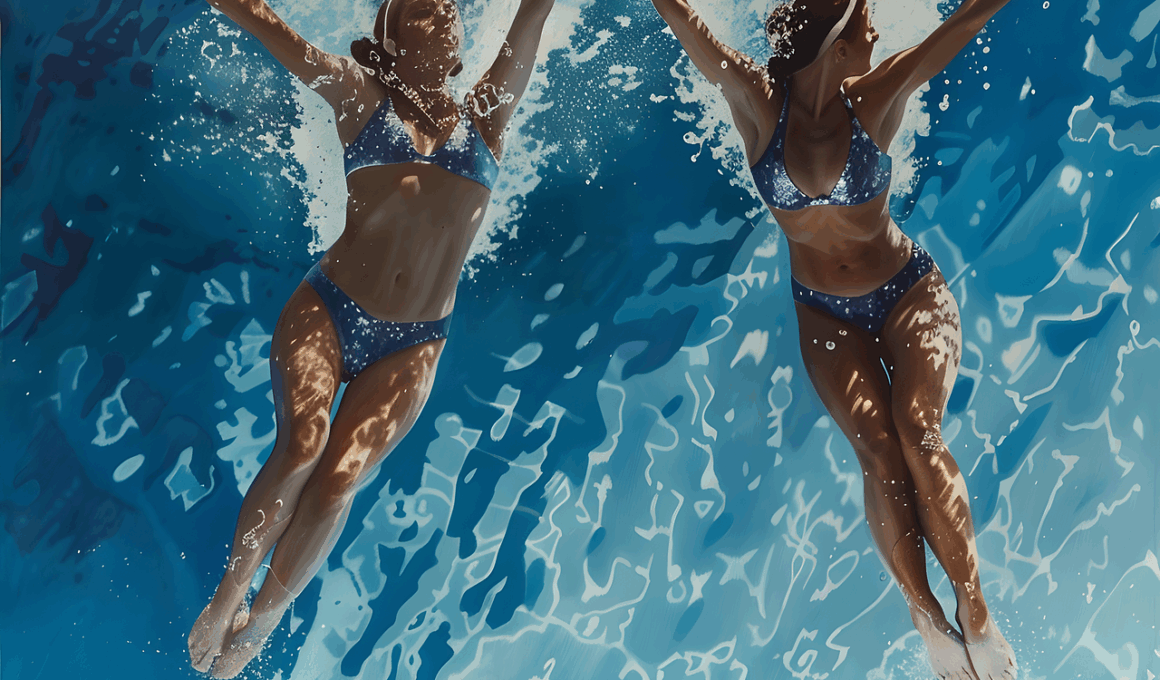Understanding Adaptive Swimming
Adaptive swimming is a specialized form of swimming designed to accommodate individuals with disabilities. It enhances their physical abilities and promotes mental well-being through water-based activities. Participants can experience freedom of movement, which is often limited on land. Adaptive swimming programs provide inclusive environments, ensuring safety and support while participants engage in various swimming techniques. These programs include tailored coaching, modified equipment, and supportive partnerships. Adaptive swimming not only nurtures physical fitness but also fosters social interactions and friendships among participants. Importantly, swimming can improve cardiovascular health, flexibility, and muscle strength, making it an ideal practice for overall health. Moreover, it can be therapeutic, helping reduce stress and anxiety levels. Various organizations and community centers offer adaptive swimming classes, ensuring easy access to individuals with disabilities. Through these programs, swimmers build confidence in their abilities, foster independence, and enhance their self-esteem. Ultimately, adaptive swimming serves a crucial role in promoting an inclusive society, where everyone can enjoy the numerous benefits that swimming provides. This makes it a perfect complementary activity for those in adaptive sports. As such, exploring cross-training opportunities is essential for enhancing adaptive swimming experiences.
Importance of Cross-Training
Cross-training is vital for swimmers participating in adaptive swimming, as it helps improve overall fitness levels, enhances performance, and reduces the risk of injuries. Incorporating varied training into an adaptive swimming regimen can yield numerous advantages. Participants may engage in strength training, flexibility workouts, and aerobic exercises to achieve well-rounded fitness. Utilizing resistance bands, free weights, or even bodyweight exercises can strengthen essential muscle groups used in swimming. Likewise, activities like yoga or Pilates can increase flexibility and core strength, leading to improved swimming techniques. Furthermore, aerobic exercises such as cycling or jogging can enhance cardiovascular endurance, which is crucial for swimming longer distances without fatigue. Cross-training promotes muscular balance, ensuring that swimmers maintain strength across all relevant muscle groups. Moreover, it can prevent burnout by breaking the monotony associated with repetitive swimming routines. Different activities also build diverse skill sets, making swimmers more versatile and adaptable in the water. Engaging in such training can boost motivation and enthusiasm while highlighting a swimmer’s potential beyond the pool. In this way, cross-training stands as a complementary tool to enrich the adaptive swimming experience and promote lifelong participation in aquatic activities.
One notable cross-training opportunity for adaptive swimmers is strength training, which focuses on building muscle power and endurance. During strength training, individuals may use specialized adaptive equipment that caters to their unique needs, ensuring efficiency while minimizing injury risks. This training can involve both upper and lower body workouts, targeting the essential muscle groups used in swimming strokes. Exercises may include modified push-ups, squats, and seated rows, allowing participants to engage in effective training without compromising safety. Moreover, group training sessions can foster camaraderie, providing a supportive atmosphere where individuals can share their challenges and successes. Having a workout partner or engaging in supervised sessions can be particularly beneficial, as trainers can offer vital tips and adjustments for better form and effectiveness. Greater muscle strength translates to improved swimming performance, enabling swimmers to execute strokes more energy-efficiently and dynamically. Additionally, strength training cultivates a sense of accomplishment, motivating participants to keep challenging themselves physically. As swimmers progress in their strength training, they will likely notice improvements in their overall swimming ability. This synergy between strength training and adaptive swimming offers considerable advantages, making it a valuable cross-training avenue for athletes.
Another beneficial cross-training opportunity for adaptive swimmers is focused on flexibility training. Flexibility is crucial in swimming, enabling swimmers to achieve optimal range of motion during strokes. Stretching exercises, yoga, and dynamic movements can greatly enhance flexibility. Adaptive athletes can modify poses to fit their personal needs or use props to support their practice. Regularly engaging in yoga or stretching routines promotes improved body awareness and relaxation, minimizing muscle tension and enhancing recovery times. These practices can be performed both on land and in the water, offering adaptability to various abilities. Engaging in water-based stretches can reduce strain on joints while still promoting flexibility, making it ideal for adaptive swimmers. Moreover, sessions focusing on the breath can significantly enhance lung capacity, which is essential for swimming. Experienced instructors can guide adaptive swimmers through tailored movements that consider their limitations and ambitions. Building flexibility and breathing control can facilitate better swimming performance, leading to smoother strokes and greater endurance during swimming sessions. As a result, integrating flexibility training into daily routines complements adaptive swimming practices and emphasizes the holistic approach to physical fitness and rehabilitation.
Aerobic conditioning is also a significant cross-training tool for enhancing adaptive swimming performance. This training focuses on improving cardiovascular endurance, which is crucial for completing longer swims effectively. Engaging in activities like cycling, swimming with fins, or using specialized hand cycles can boost stamina while ensuring participants are comfortable and confident. These exercises can usually be tailored to accommodate various disabilities, using proper equipment and guidance. Furthermore, incorporating interval training can lead to improved performance during adaptive swimming sessions. Adaptations include varying intensity levels during training, allowing swimmers to discover their limits while promoting stronger cardiovascular health. The beauty of aerobic conditioning is that it can be performed in many environments, be it on land or in water, sustaining individuals’ engagement and interest. Group classes can also create a sense of community, with participants motivating one another and sharing their journeys. The benefits of enhanced aerobic capacity can lead to moments of triumph in the pool, providing a boost to individual performance and overall enjoyment of adaptive swimming. The synergy created between aerobic conditioning and swimming works to deepen the experience and fosters a stronger commitment to aquatic sports.
Another recommended cross-training opportunity for adaptive swimmers is focused on aquatic therapy. This therapeutic approach utilizes water’s natural properties, providing a supportive environment to promote physical rehabilitation and improvement. Aquatic therapy emphasizes gentle movements tailored to individual abilities, helping to strengthen muscles and increase range of motion. Activities may include water walking, swimming with flotation devices, and resistance exercises using water currents. Such practices can bolster confidence in the water and facilitate a greater comfort level in swimming environments. Furthermore, interacting with trained aquatic therapists aids individuals in learning modified techniques specific to their needs. Engaging in aquatic therapy can also address psychosocial aspects of disability, as it fosters connections with others facing similar challenges. Ultimately, this form of cross-training aims to establish a safe and supportive atmosphere, guiding adaptive swimmers toward improved functionality in daily life. As participants progress, they often find their abilities expanding not just in the pool but in various aspects of their life. The holistic focus of aquatic therapy makes it a vital complement to adaptive swimming, reinforcing physical health and overall well-being.
Lastly, implementing sport-specific drills is a crucial cross-training method for adaptive swimmers. These drills target fundamental skills that translate well into swimming performance. Participants practice stroke technique, turns, and starts, which can significantly enhance overall technique. Drills can be adapted to suit individual needs, allowing swimmers to excel and gain confidence in their ability. Sport-specific training also emphasizes muscle memory, which benefits swimming efficiency in the long term. This type of training can take place in both structured practice and casual settings, providing flexibility for adaptive swimmers and their schedules. Moreover, the fun and engaging nature of these drills can help maintain motivation. Engaging in training sessions alongside training partners or coaches fosters collaborative growth, encouraging feedback and friendly competition that pushes athletes to improve. Emphasizing these elements fosters resilience and promotes a sense of accomplishment. Consequently, sport-specific drills act as a smooth transition into adaptive swimming, guiding participants to achieve their goals and continuously strive for performance enhancements. By incorporating diverse training elements into an individualized program, adaptive swimmers can unlock their full potential and pave the way for success in aquatic endeavors.


